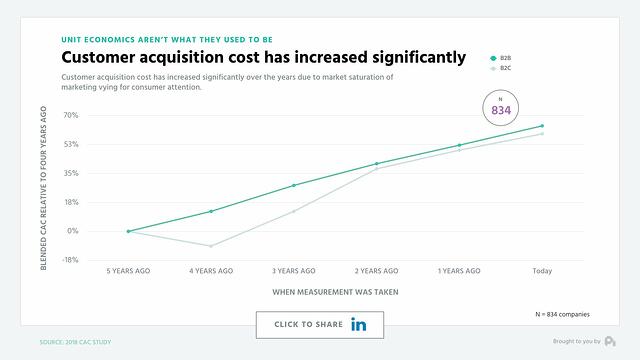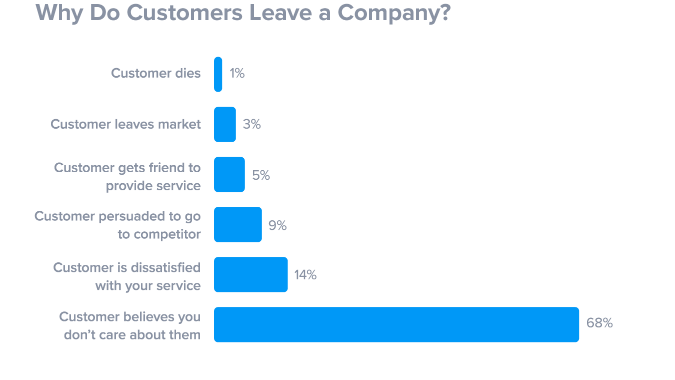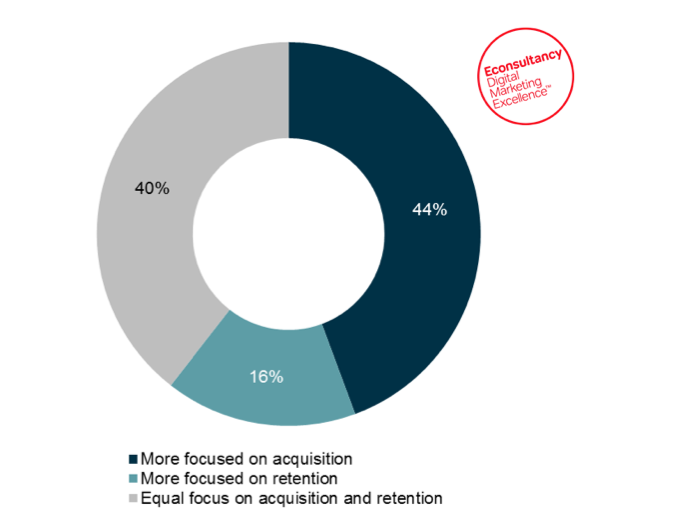This is a guest post from Daniel Bishop.
The success of your business venture is directly tied to your ability to acquire and retain customers. The more people you sell to, the more renown you will gather for your brand. Likewise, maintaining a long-term relationship with your existing customers will provide you with a reliable stream of revenue.
However, it is not always feasible to devote equal attention to both of these activities. Some businesses will tend to focus more on customer acquisition, whereas others will concentrate their efforts on customer retention. The question then becomes, if you had to choose one approach over the other, which one should you pick?
Various arguments have been proposed in favor of each side, but finding a clear-cut answer has been proven somewhat difficult. What works for one business might be less effective for another, which means you can’t just mimic what others are doing and hope to succeed. What you have to do instead is to examine both approaches, and try to understand their respective pros and cons.
Unfortunately, most articles on the topic you can find online have a clear bias towards one of the two options. What is lacking is a balanced overview of the two sides, so we’ve decided to write one from scratch. Keep reading, and find an approach that works for your business.
Acquisition-focused Approach

Source: papersowl.com
Customer acquisition represents a systematic effort to gather new customers. The process of acquisition has two main phases. The first phase involves generating interest in what your company offers via various marketing techniques, such as generating customer reviews and word-of-mouth, paid advertising or cold calling . And in the second phase, promising leads are converted into paying customers. Marketing and salespeople are usually the ones tasked with designing customer acquisition strategies, as well as implementing them.
The main benefit of an acquisition-focused approach in customer relations is the fact that it can be performed on a large scale with comparatively little investment. This is mostly thanks to recent advancements in digital marketing technology, specifically marketing automation. It is now easier than ever to put marketing content in front of a global audience – all you need is a website, a social media profile, and an email list, and you can let the software do the rest.
By using customer acquisition, your company can discover new selling opportunities. This is especially true if you’re bringing a new kind of product or service to the table. If you did your customer research right, simply spreading the word online about your offer will be enough to get people interested. Not all of them will end up buying your product, but if you cast a wide enough net, statistics will work in your favor.
One of the downsides of pursuing customer acquisition above all else is the fact that consumer interest tends to be fickle. You might succeed in your first wave of marketing outreach, but rival companies will catch on to the fact that there’s money to be made in your industry niche, and they will start offering similar services.
Retention-focused Approach

Source:www.superoffice.com
Customer retention is concerned with keeping your existing customers involved with your business. The idea is that if you keep customers engaged, they will be more likely to buy from you in the future. In order to drive repeat purchases from customers, your company has to provide a stellar customer experience. This is usually achieved through a combination of customer service, customer support, customer care, and customer success.
There is no one-size-fits-all approach to customer retention. Instead, there is a variety of methods that can help you leave a positive impression on customers, such as:
- Creating content that can help customers solve certain problems.
- Reaching out to customers via email to check up on them if they haven’t been interacting with your company lately.
- Keeping customers informed about upcoming products, features, and events via live chat.
The main advantage of pursuing a retention-focused approach is the price. It costs 5 times as much to acquire a new customer than it does to retain an existing one. This makes good intuitive sense. If you’ve already established a relationship with a client or customer, you don’t have to perform extensive research prior to your next attempt to sell. As a result, budget-minded businesses are naturally more inclined toward customer retention.
With all this being said, focusing on customer retention to the exclusion of all else has its downsides. For one, your marketing, sales, and customer service teams have to coordinate their efforts in order to provide seamless, consistent customer experience. This level of coordination can be difficult to achieve. Another difficulty concerns the need to provide a personalized experience for each customer, which can be costly and time-consuming.
A Combined Approach

Source:econsultancy.com
As we’ve seen, both customer acquisition and customer retention have their unique pros and cons. Neither strategy has a clear advantage over the other, which is why you shouldn’t focus on either of them exclusively. What you should do instead is find a more balanced approach – one that combines the benefits of both while minimizing their downsides. This kind of approach leverages the combined power of sales and marketing to attract quality leads, which are then seamlessly transferred to your customer care unit for long-term nurturing.
Pursuing customer acquisition and customer retention at the same time used to be something only large corporate enterprises such as Amazon, Google, Facebook could manage. Today, this is no longer the case thanks to the emergence of a variety of powerful software tools. With the help of these tools, small and mid-sized businesses can now leverage the benefits of customer acquisition and customer retention.
Customer acquisition tools can help you manage your website SEO, email marketing, and social network outreach, and they can be acquired for little to no cost. There are similar options available for customer retention. A free CRM system can help you keep track of customer data, allowing you to adjust your customer relationship on the fly. Another way to boost your customer retention rates is to offer a self-service option via live chatbot. These automated conversation systems can address common customer queries, making life easier for your customer service reps.
Conclusion
If you are looking for ways to help your business grow, customer acquisition and customer retention are both valid approaches. Each has its own pros and cons, but their effectiveness at accomplishing business goals are undisputed. While using one approach doesn’t prevent you from using the other, the cost of doing so used to be steep. However, thanks to modern software, it is now possible to combine the two without much hassle. So our final piece of advice would be to use both if possible.
About the author: Daniel Bishop started their career in digital marketing working for a few local marketing companies. After a year or two of learning different aspects of the job, he moved on to work for DesignRush as a content advisor. Now, he works for ReallySimpleSystems as an assistant editor and marketing consultant. Other than that he enjoys good coffee, and Otis Redding.